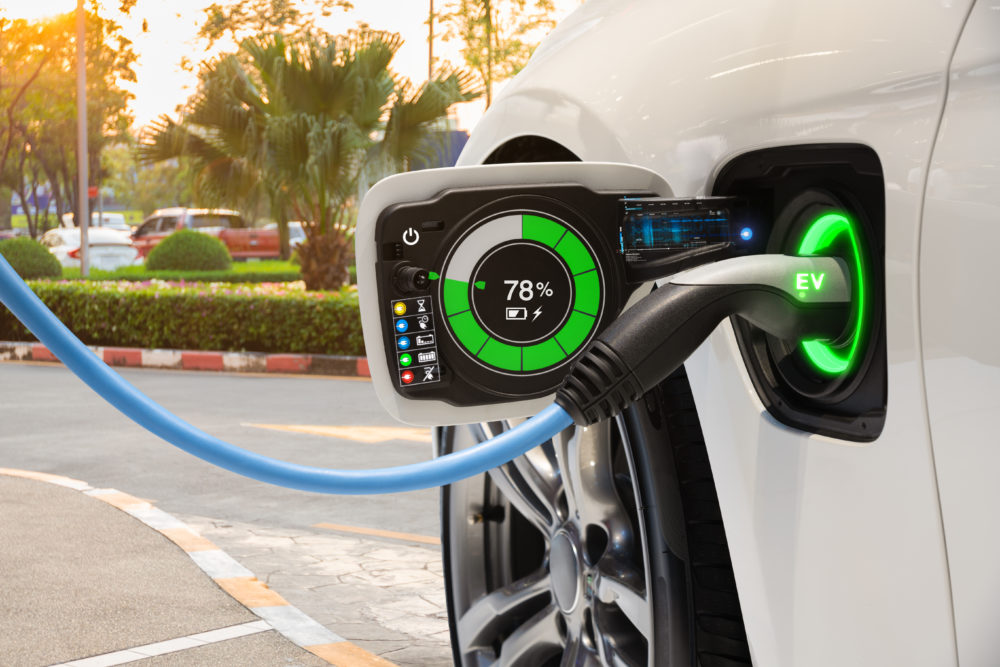Electric Vehicle Interest Growing Among Fleets
In recent years, interest in alternative-fueled vehicles, in particular EVs, has gained a second wind, with renewed examination from a wide variety of fleets.
In recent years, interest in alternative-fueled vehicles, in particular EVs, has gained a second wind, with renewed examination from a wide variety of fleets.
There are various reasons for this, but what is catching the attention of many has been the onslaught of future product announcements from OEMs on forthcoming hybrids and battery-electric vehicles (BEV), with some OEMs stating that every model in their product lineup will have either a hybrid or BEV counterpart.

“There is so much publicity about electric vehicles and greenhouse gas emissions that it feels like the industry may see a greater migration to these types of alternate-fuel technologies in the near future,” said Dave Meisel, executive vice president – operations for Quanta Services. “That will be a huge change for the way the industry does business ranging from the skills of our technicians to the limitations of charging or fueling infrastructure to incremental regulatory or compliance requirements to name just a few. No one knows exactly where it is going to go or when, but rest assured the impact on the industry will be huge.”
There is also a generational demographic change occurring in the commercial fleet industry, which is increasing overall receptivity by these next-gen users to operate alternative-fuel vehicles.

“CO2 emissions reduction is a global trend and next-gen employees have bought in — it isn’t going away,” said Tom Callahan, president of Donlen.
In addition, many U.S. fleets are being asked by their European-headquartered parent company to conform to corporate-wide sustainability targets.
Also, a growing number of multinational companies have committed to become carbon neutral or go all electric in the next five to 10 years. One example is the EV100 initiative, which is a global business initiative designed to fast-track the uptake of electric vehicles and infrastructure.
Globally, there is an ongoing proliferation of corporate initiatives to reduce greenhouse gas emissions, with European fleets in the vanguard. European environmental regulations are migrating from CO2 reductions to reductions in aggregated emissions, which include not only CO2, but also NOx and particulates. Despite the high cost, many companies, in all global regions, remain fully committed to achieving self-imposed sustainability targets, especially multinational corporations.
In the U.S., there are six key factors that are driving (or impeding) fleet sustainability programs:
- Corporate social responsibility.
- Stakeholder pressure.
- Difficulty in developing a long-term fleet acquisition strategy.
- Limited charging infrastructure that keeps range anxiety a user concern.
- Limited green alternatives with medium- and heavy-duty trucks.
- Expansion of sustainability initiatives beyond the vehicle that incorporates fleet maintenance facilities.
There is a less tangible, but very real impediment to the transition to alt-fuels, which is user pushback.
“From my personal perspective I believe a key ingredient to implementing a successful fleet sustainability program is change management,” said a fleet manager who wished to be anonymous.
This fleet manager defined change management as the process, tools, and techniques to manage the driver and management side of change to achieve the required business outcome. He contends that change management of drivers is essential for a corporation to successfully transition to the adoption of alternative-fuel powertrains.
To minimize user pushback, some fleet managers opt for a strategy of incremental change. For instance, many vehicle electrification strategies tend to combine hybrids and dedicated battery-electric vehicles in the same acquisition bucket, with the focus on hybrids. The fastest growing portion of the fleet vehicle electrification segment are hybrid acquisitions.

“We are looking for greener vehicles. All of our business-use sedans that go into service are now hybrids,” said Jim Bigelow, senior director, enterprise fleet for Cox Enterprises. “We have been acquiring 90-plus hybrids per year for the past four years. We are focusing on the safest vehicles in the fleet trim level. The No. 1 challenge continues to be obtaining green vehicles from the OEMs. At the moment, the trend is that the most OEMs are ‘skipping’ hybrid and moving along to electrification.”
In addition, fleets that operate in-house maintenance facilities, such as Cox Enterprises, are incorporating these operations into their overall corporate sustainability programs.
“We are greening all of our shops,” said Bigelow. “This includes all aspects of our fleet from cradle to grave. For example, we are working with OEMs and upfitters to manufacture/build a greener vehicle/upfit, which includes all components of the assembly.”
by Mike Antich
Source: https://www.automotive-fleet.com
FLEET MANAGEMENT AUDIT
Fleet management is the use of a set of vehicles in order to provide services to a third-party, or to perform a task for our organization, in the most efficient and productive manner with a determined level of service and cost.
Fleet management activities are shown in the following graph 1:

Graph 1: fleet management activities
The proposal audit analyses and assesses all fleet management activities shown in the graph 1, and its main goals are:
- Know the overall status of the fleet management activities
- Provide the analysis, the assessment, the advice, the suggestions and the actions to take in order to cut costs and increase the efficiency and efficacy of the fleet management activities
With the information obtained, we’ll elaborate a report that holds the overall status of the fleet management as well as the suggestions, recommendations and the measures to take in order to cut costs and optimize the fleet management activities.
CLICK ON THE FOLLOWING LINK TO DOWNLOAD THE PROPOSED FLEET MANAGEMENT AUDIT:



